My longest journey began 5 years ago, when I left Poland and together with my partner we started to explore the world. First we made the trip Krakow - Madrid on foot, then we flew to Chile, where we lived for two years. Then we decided to cross the entire Argentina on bikes and made a journey from Mendoza to Puerto Iguazu and that's what I will be talking about today.
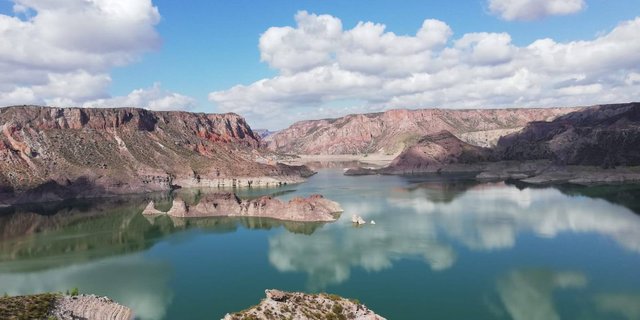
Area in around of Mendoza, beginning of the trip
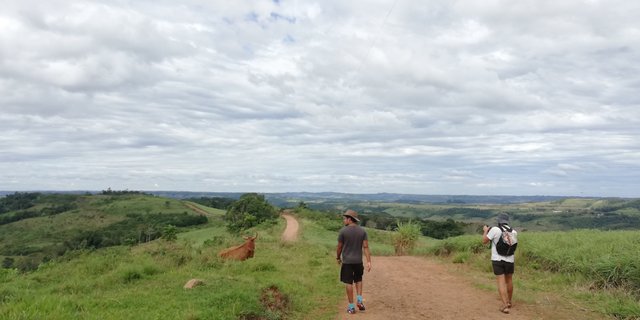
Relax in Misiones region, almost the end of the trip
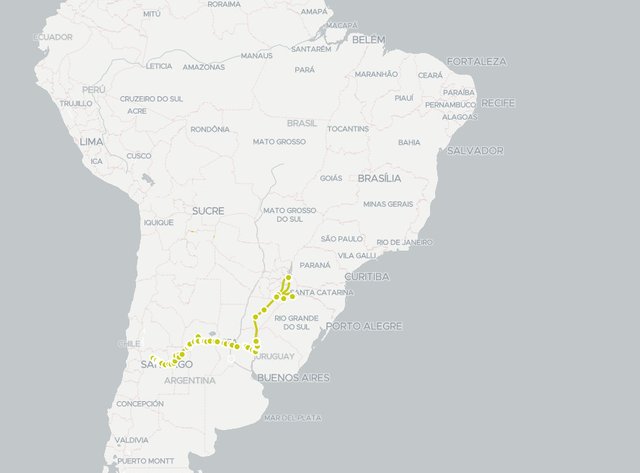
During Menodza-Puerto Iguazu adventure, we travelled in total almost 1,300 km on bicycles and an additional 900 by bus. That trip made me lose 10 kg of my weight and get a lot of confidence that everything is possible.
The episode of the journey which I describe took us 100 days. If we were in a hurry, we could do it much faster, but we wanted to get to know the country as much as possible. We stayed longer in places that we liked.
We started our journey in Mendoza, where our friend lived. We stayed with him for a few days to get to know the city and make the last preparations. We reviewed the bikes, bought basic parts that would allow us to make repairs and checked our backpacks again to get rid of unnecessary things. The weight of the backpacks was very important because we were carrying it almost all the time. We also had bags that clipped directly to the bikes, but they were full of repair parts, water and food supplies.
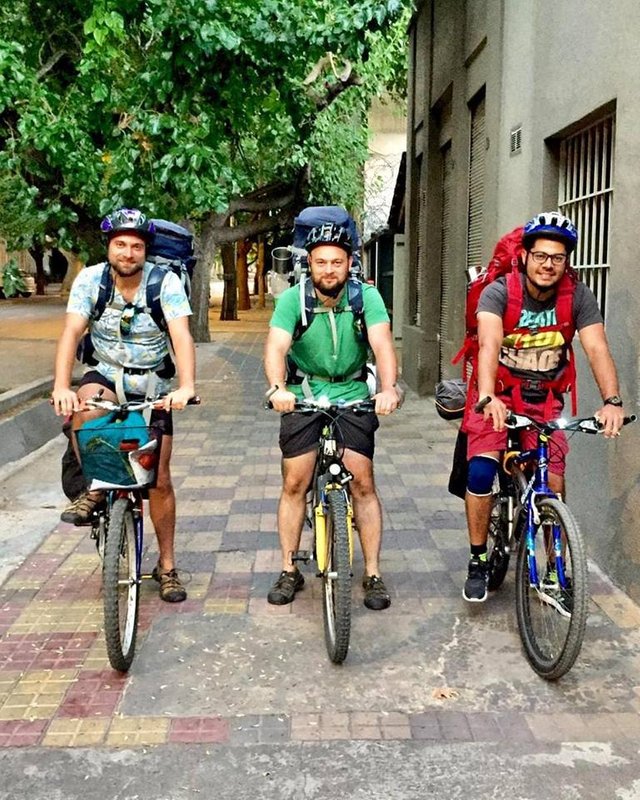
Along the way, we met a lot of kind people who helped us with bike repairs for free, often offered fruit for the road or help in some other form. Once we were offered an overnight stay in the yard and we received bottle of wine, another time the gaucho invited us to his home to talk about his experiences in the Falklands war, or a stranger cooked dinner for us. Each time we enjoyed the hospitality of Argentinians, but we tried to return the favor as much as we could: we were sharing our own supplies, buying sweets, telling travel stories or leavingPolish handicrafts as gifts.
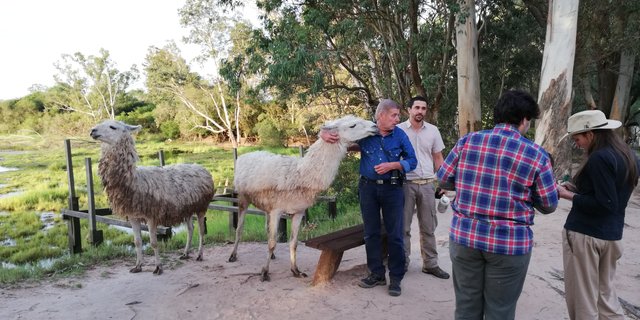
Example of kind people - group of National Park Rangers who invited us for some trip, Villaguay
Leaving Mendoza, we headed east. The first difficulty we experienced was extreme heat. We started our journey in February, mid-summer in the south, and pampa around Mendoza did not offer any shadow. It certainly didn't help that we didn't have any training, so riding a bike with a lot of weight on our backs was a big challenge for us.
We decided to go 3-4 hours each day in the morning and 2-3 hours in the evening. In the meantime, we waited the worst heat in the shadow or if there was an opportunity, at gas stations, which offered air-conditioned interiors
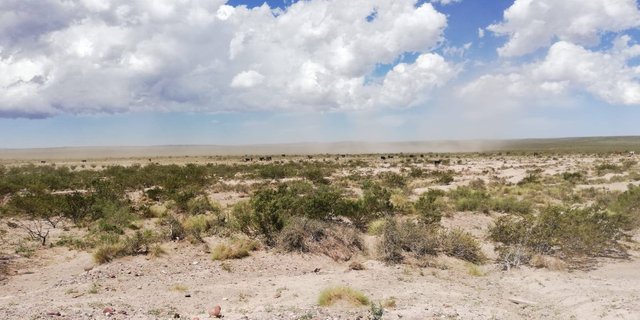
In the evening we traveled shorter, because we needed time before sunset to find a suitable place to set up a tent. We mostly slept in a tent into the wild, looking for a well-hidden place.
Although we spent most of the night somewhere on the pampas, we sometimes slept at campsites, in the squares in the city center, in the backyards of people we've met and once even at the bus station and in the church. In the big cities we were renting airbnb.
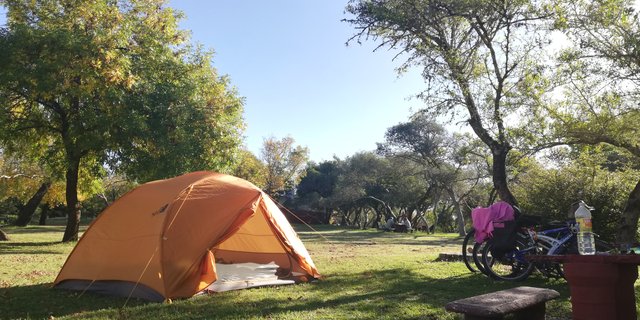
Apart from the heat, another problem we experienced on the road was flora. Most of the area from Mendoza to Cordoba was full of thorny plants. Small spikes, invisible from the bicycle, were quite common to find on the road. They were not big enough to destroy the car tire, but they were making holes in the bicycle tire quite easily. Ultimately, throughout the entire trip, we patched the inner tubes from our wheels 16 times. Before that, I didn't know how to do it. Now I have such experience that if you would wake me up in the middle of the night, I could do it with my eyes closed :)
On our way to Villa Gral Roca, we discovered the first roadside shrines where people were leaving small gifts for the saints: bottles full of water or wine, toys, cigarettes, photos of dead people, touching letters full of requests and thanks. It was quite an oriental experience for us, we did not know similar traditions from other countries, so we were often stopping to examine them with an ethnographer's eye and learn more about local traditions and beliefs.
The road, practically completely empty (only one car passed us during those two days), also amazed with its nature. The vast pampa, stretching to the horizon, was home to numerous birds and insects. Whenever we had the opportunity, we were stopping to observe the life around us.
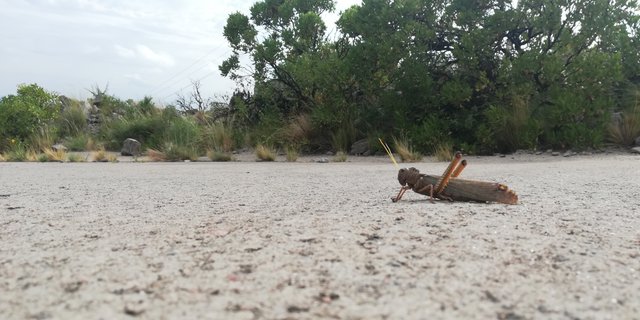
We left the sleepy San Geronimo and continued our journey. We passed one of the many Monumento a la Bandera, scattered all over the country, and after another two days we reached San Francisco del Monte de Oro - a beautiful town in one of the valleys of the Cordillera.
After so many days of traveling through the dry and hot pampa, we were thirsty for access to water. How wonderful it was to discover that the town and its surroundings are crisscrossed by numerous small rivers where whole families enjoy bathing. We stopped for a while to swim with the others. When we were preparing to leave, an accident happened. My companions were getting on their bike when some car hit them. Luckily car was moving slowly, but it hit hard enough to slightly bend the wheel of one of the bikes and hurt my friends superficially.
The people who were in around acted very responsibly. The person who caused the accident gave us his contact details, and several people in the area offered us a ride to the nearest campground, where we decided to stay for a few days to make sure that none of my friends had any health problems.
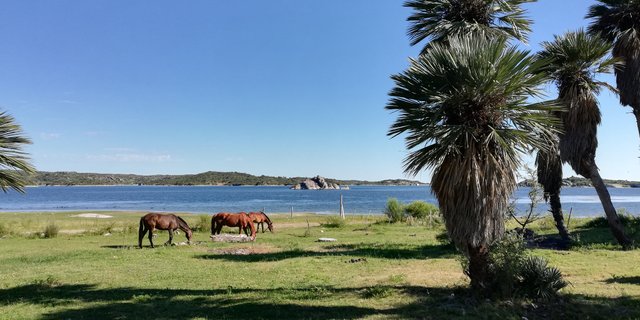
It all ended well and the place we stayed in was lovely. We slept right in front of a great lake, we were often woken up by horses that approached the tent with curiosity. We spent our days eating home-made cheese and bread and swimming in rivers. Now that we had more time, we were not swimming with the others in the most crowded places. We managed to discover some picturesque places where we were alone, close to the nature. As I love naked bathing, I enjoy places where no one disturbes me (no worries, I will not publish any of that photos :P )
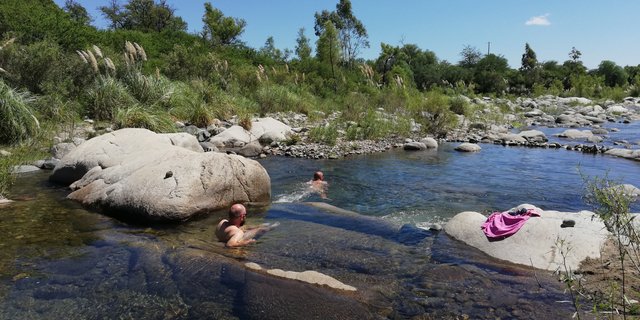
The next place we went was La Carolina. To reach it, we had to traverse the first mountains. With the altitude, the weather changed a bit, it got colder, more foggy, the landscape began to resemble Scotland - rocky, a lot of grass, practically no trees or even bushes.
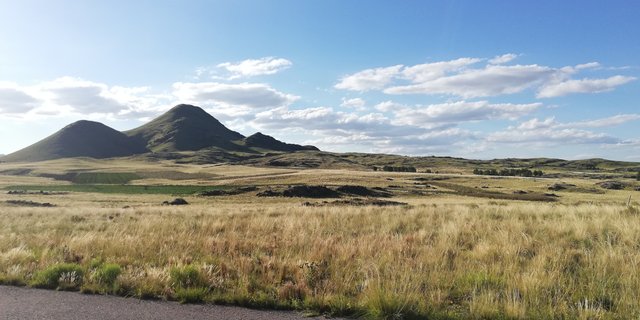
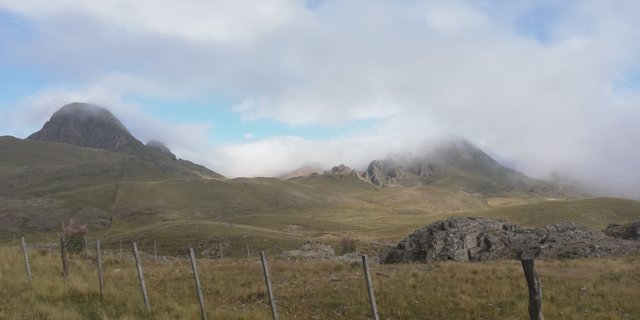
La Carolina is a very small town where all the houses are entirely made of stone. It used to be a mining town, today it is more tourist oriented (although not crowded. Not too many tourists, in fact). Although it consisted of only a dozen houses, there were also restaurants, museums, art galleries, beautiful parks open to everyone for free.
On the way we visited also, among others, the Inti Huasi cave with the traces of people from prehistoric times and a lama farm where we ate lama milk based cheese and finally we reached the village of Nono with the strangest museum in the world.
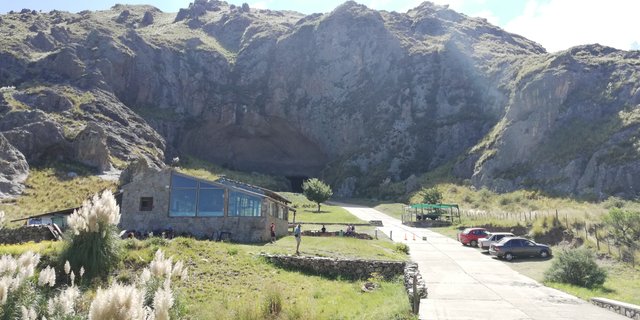
Inti Huasi cave
The weirdest museum in the world that I mentioned in the previous paragraph is the Museo Rocsen. A museum contains 18,000 exhibits divided into several thematic rooms. Some of them were utter rubbish, others were incredibly valuable exhibits. A very strange experience.
Then we traveled the Cura Brochero trail, where a storm hit us, destroying my notes and actually wetting all the clothes we had. We had to dry everything for the next day, and as it was going to rain in the evening, we slept in the historic church, opened to us by a cordial curator.
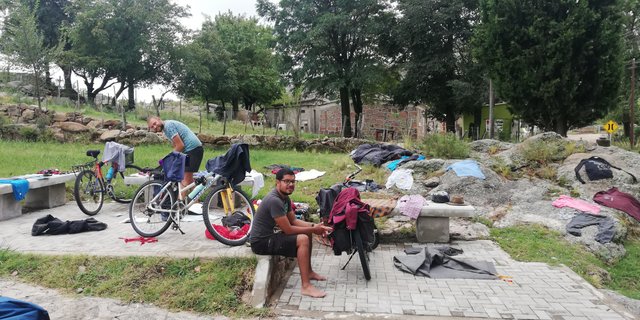
We also had the opportunity to bathe in Mina Clavero, get completely cold and get wet on the way to Villa Carlos Paz (remember that we traveled through the mountains all this time, sometimes climbing at an altitude of over 2000 meters, so the weather could change very quickly) and finally we got to Cordoba
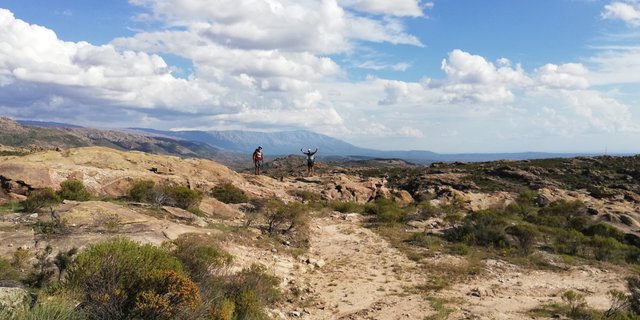
Cordoba itself did not impress me much, but the surroundings of the city were great. The nearby towns were full of colonial monuments, monasteries, beautiful villages crossed by rivers, salt flats in the north...
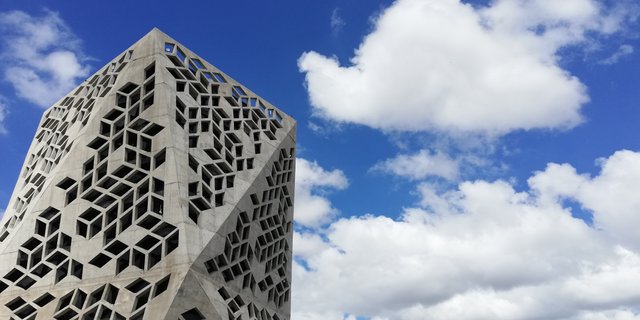
Modern and colonial Cordoba
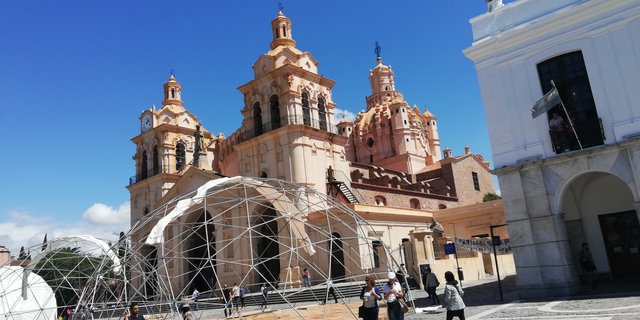
Although we had learned to repair our bikes, we had to use someone else's help. On the way, one of the pedals of the bicycle completely fell off. It was very stressful because in this area the distances between one and the other town are 60-70 km. We were making it very slowly. When we arrived to the village, it turned out that there was no repair shop nearby. As it was already late, the local volunteer fire department offered to stay overnight in their building. We did so, and next morning they brought us new pedal.
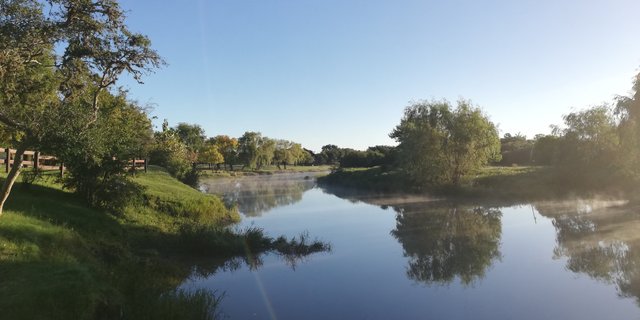
In Santa Fe, we had to cross the Parana River on a small boat... It was tight!
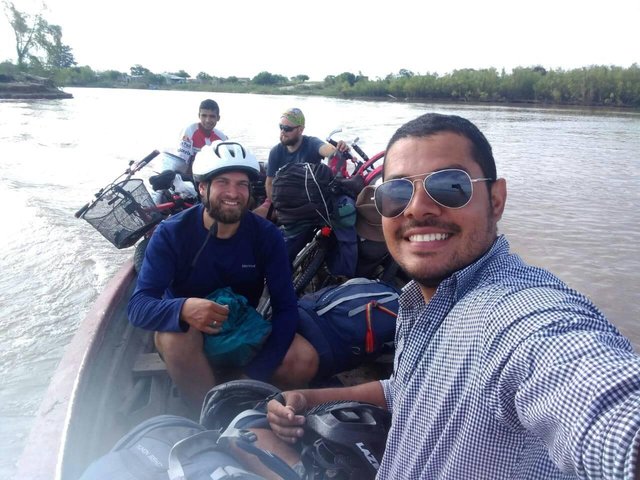
From Parana we decided to travel to Concepcion del Uruguay where we planned to cross the border with Uruguay. Our tourist visa was coming to an end and we had to change the country for at least few days to continue our journey.
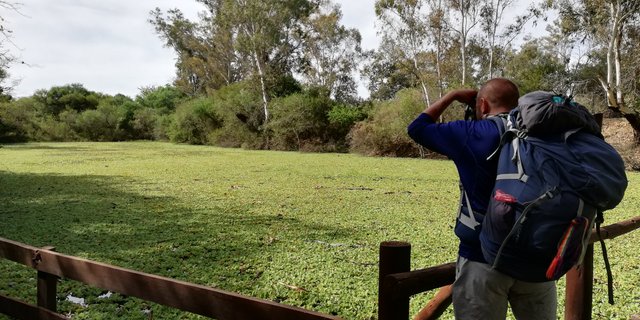
On the way to Uruguay, the most interesting place we visited was Villaguay. We decided to visit it, seeing on the map that there is a small private Nature Park. We wanted to see how it function. We met the founder, an elderly man of German origin. He told us a bit about the history of the park and invited us to a private tour that he organized for Rangers from other parks and for the ornithology club. We were pleased to accept the invitation and made friends with them. We decided to extend our stay in Villaguay to participate in the ornithological symposium which was held the next day.
Before crossing the border with Uruguay, we made the final decision to give up further cycling and to use buses from then on. Our bikes were in poor condition, it cost more and more to repair them and, above all, after almost 1,300 km, we were very tired. Eventually, we donated all three bikes to other people. We gave one to the man who looked that he is in need, the other two we gave to nurses in a retirement home, suggesting that they could sell them and buy for that money something that will be useful to the residents.
We took the bus to Mercedes - a small town known for its great sanctuary. This is where Gauchito Gil, known throughout Argentina, comes from. Gauchito Gil is the Argentine version of Robin Hood who was robbing the rich and gioving money to those in need. Although he has not been officially declared a saint by the Vatican, everyone in the region considers him so.
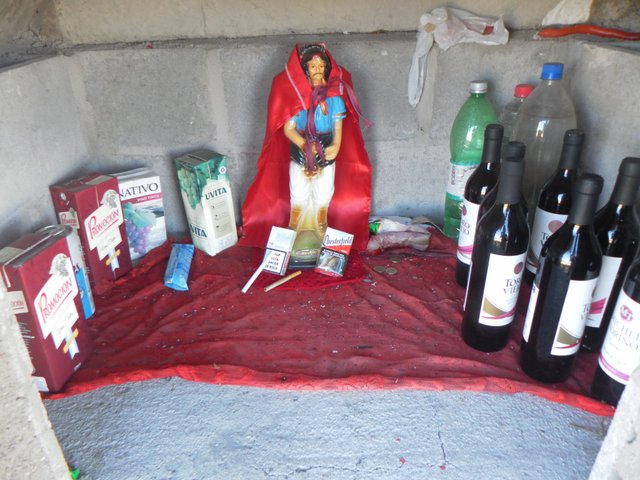
Chapel dedicated to Gauchito Gil and typical gifts for the "saint" - vine and cigarettes
In Mercedes, it is very easy to meet traditional gauchos who still travel on horses instead of cars, wear typical berets and large belts with which they gird their hips and listen to Chamame music, the local type of country.
In Mercedes, we also encountered lush flora and fauna, including otters, poisonous snakes and spiders. Unfortunately, an unpleasant incident also happened here. While sleeping in a public campground, we were robbed of our belongings outside the tent. A thief stole our shoes and a phone.
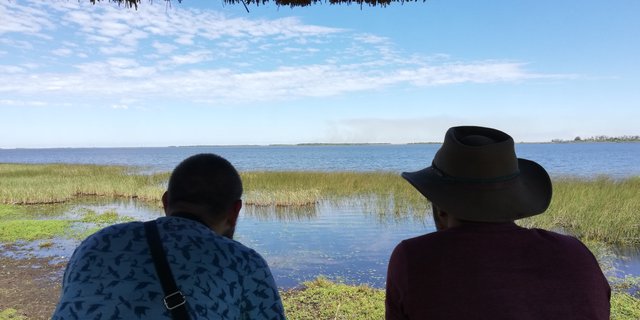
From Mercedes, we took a small bus to Villa Carlos Pellegrini, which is the gateway to the Ibera National Park. Ibera Park is a gigantic swamp where I could spend months. We slept in a tent, at one of the private campsites, and capybaras - the world's largest rodents wandered around us. We fell in love with capybaras and we would like to hug them, but unfortunately it is not safe. While the capybara itself will not hurt us, these rodents carry many potentially dangerous germs, so any contact is not advisable.
Apart from capybara, Ibera Park was full of caimans. Some of them rested five meters from our tent, and although I was very restless on the first night, I quickly got used to the adrenaline it provided.
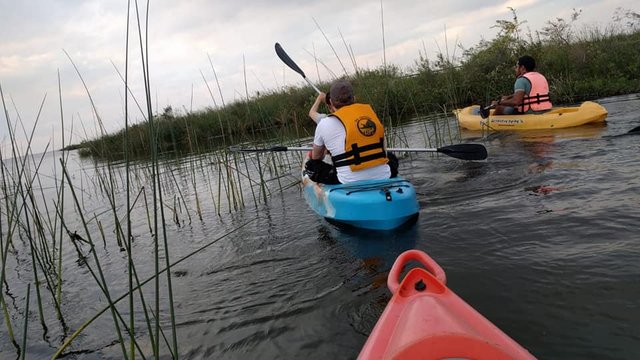
Kayaking is even more exciting when you know that water is full of caymans :)
Other animals that we saw in Ibera Park were screamers (the loudest monkeys in the world), Boa serpents, roe deer and countless numbers of birds, the names of which, in most cases, I am unable to recall. Ibera National Park is by far my favorite place in Argentina.
When it was time to continue our journey to Posadas, it turned out that getting out of Carlos Pellegrini was not that easy. The bus only ran once a day and returned to the Mercedes. We wanted to keep going. A return to Mercedes would mean an additional hundreds of kilometers of road. We probably managed to ask every person who lived in the village if they would give us a lift to Posadas for a small fee, but most refused or gave a price so high that we would not be able to afford it even if we were saving for a month. In the end, we managed to find someone who agreed to take us for a high but acceptable price.
In Posadas, we stayed at the Hostel. The rainy season was approaching and the tropical region we were in had very high rainfall. We preferred not to risk the stream of water washing our tent and all our belongings.
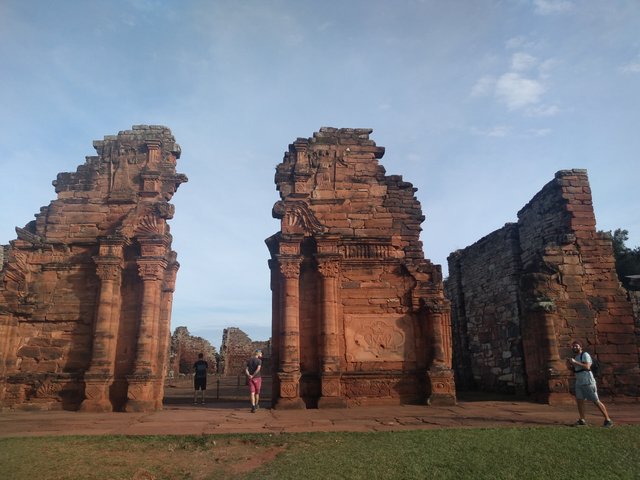
There were Jesuit ruins in the area that are worth visiting. Although the largest and most magnificent Jesuit Ruins are in Paraguay, the Argentinian ones are also worth attention, especially since the admission ticket is really cheap.

In addition we visited many places with smaller waterfalls. It was a kind of a prelude to the climax of the journey - one of the most beautiful waterfalls in the world - Iguazu Falls
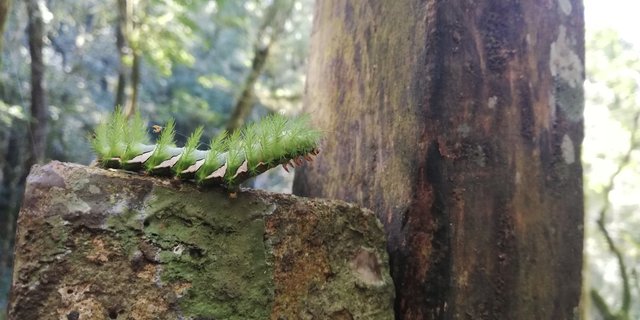
We stayed in Puerto Iguazu for three whole weeks. Our friend from Mendoza, with whom we stayed on the first day, joined us.
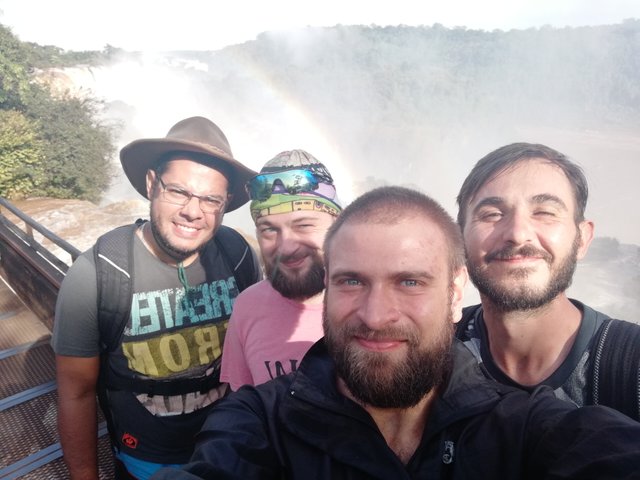
The biggest attraction in Puerto Iguazu were the waterfalls themselves, which took us all day to explore. The local fauna and flora delighted me, although some elements made me sad. I did not like that many jungle monkeys, accustomed to the presence of humans, searched for food in garbage cans, abandoning the mode of searching for food that is assigned to their species.
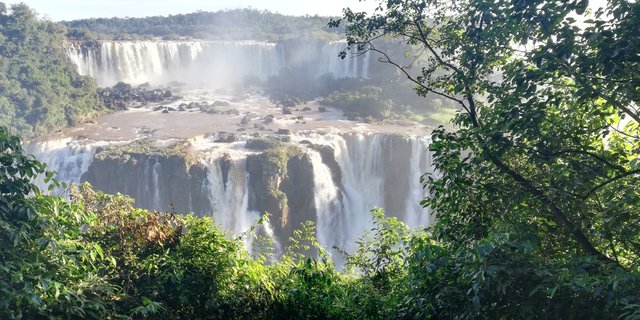
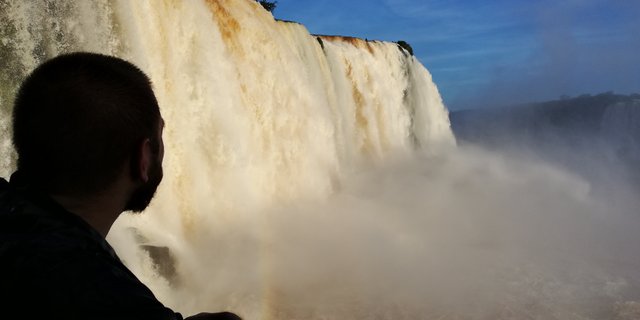
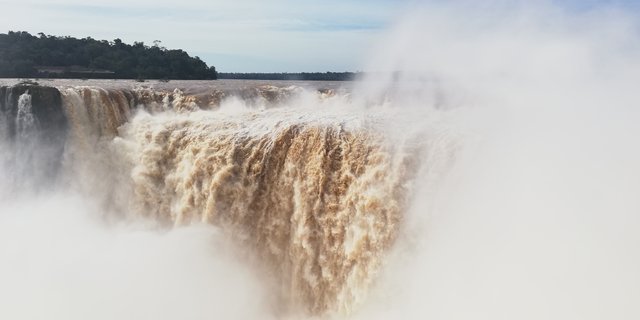
Besides the waterfalls, we visited a hummingbird park, an animal shelter, a plastic house and some other attractions. Our one-long adventure with Argentina ended here and gave way to another - 75 days in Paraguay. However, I will write about this later.
All photos contained in the post belong to me and come from my private collection.
Thank you for making that competition @steemmensclub @okanbey and @shadervan
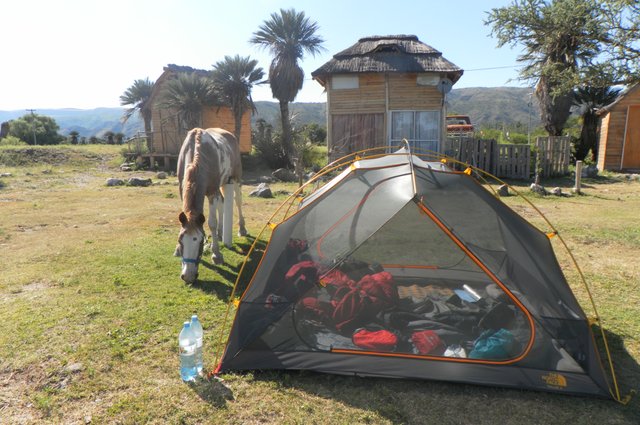


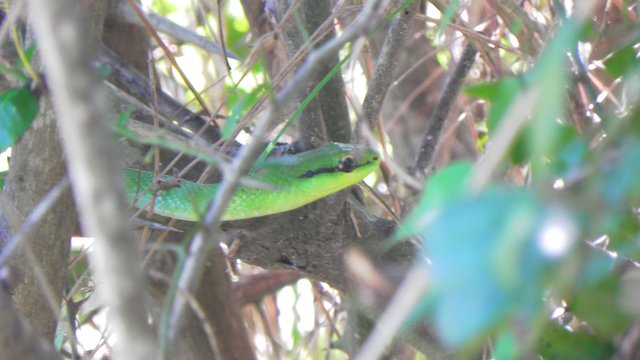
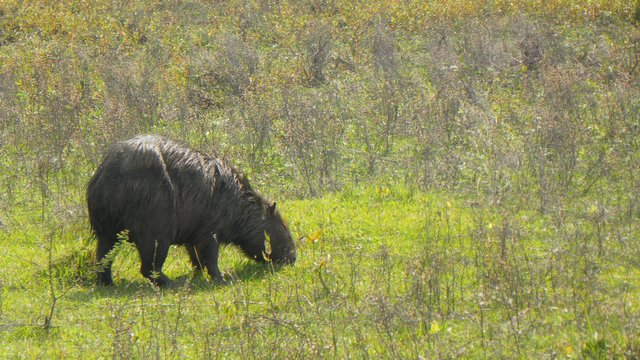
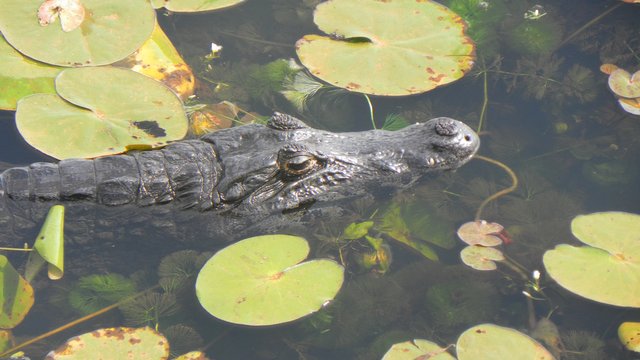
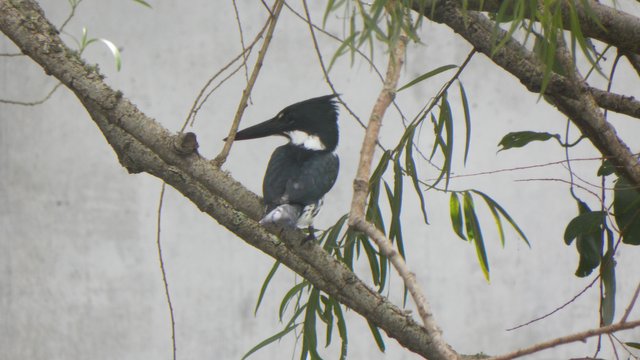
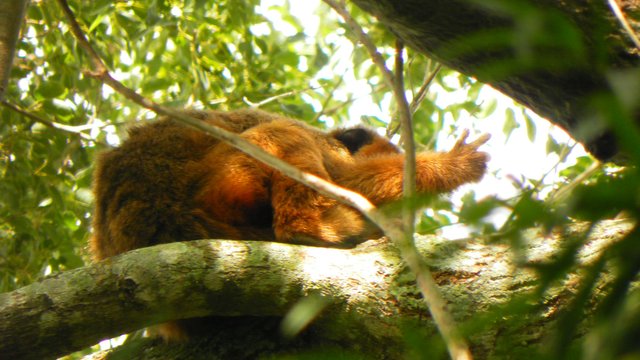
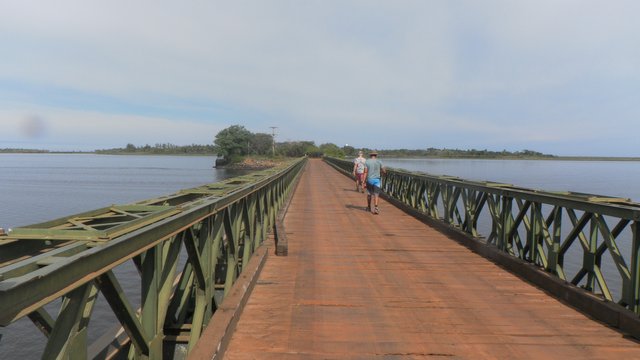
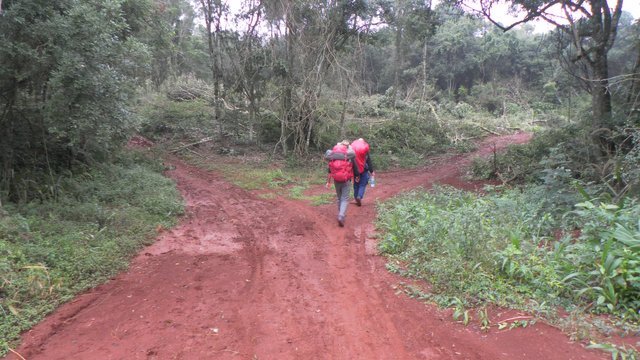
First of all I am so amazed with your amazing trip that you had. I totally enjoyed reading every detail of it, in some part I even laughed with myself, in other parts I was thinking why shouldn't I do this? You mentioned the confidence part and the weight loss part, this are great personal benefits. Besides that whatever you saw, whatever you have experienced are once in a life time experiences. Thank you so much for sharing your furthest travel with us!
Downvoting a post can decrease pending rewards and make it less visible. Common reasons:
Submit
Thank you for that words. I'm glad you enjoyed my post :) I'll gladly write more about the trip soon.
Downvoting a post can decrease pending rewards and make it less visible. Common reasons:
Submit
Hello @papi.mati
Thank you for writing an amazing content. Sharing your experience with us. We as a Steem Men's Club totally congratulate you for your effort. And we are kindly inviting @steemcurator01 to have a look on this amazing content!
Downvoting a post can decrease pending rewards and make it less visible. Common reasons:
Submit
Thank you very much!
It was the honour to share it with you.
I promise to post more good quality content in steem men's club community.
Downvoting a post can decrease pending rewards and make it less visible. Common reasons:
Submit
Nice job! I enjoyed reading it from start to finish. Thanks for sharing.
Downvoting a post can decrease pending rewards and make it less visible. Common reasons:
Submit
Thanks for motivating me to share it by making this contest :)
Downvoting a post can decrease pending rewards and make it less visible. Common reasons:
Submit